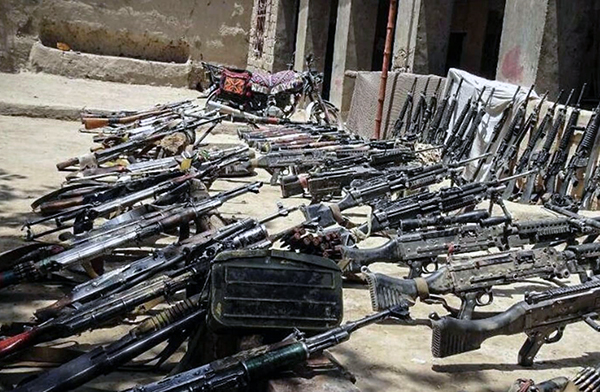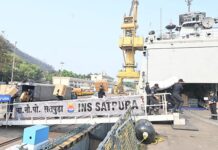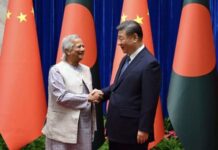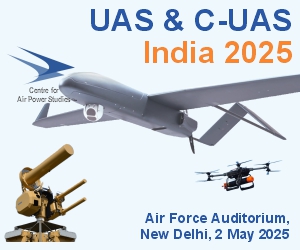
The last vestiges of the US war in Afghanistan are being preserved by a thriving illegal market for weapons and combat equipment left behind by American, Nato and former Afghan troops.
Landikotal, Pakistan’s farthest major town along the Durand Line in the tribal Khyber district, no longer makes a secret of what is perhaps its most lucrative trade. Firearms and equipment bearing military markings of the US and Nato countries are openly displayed for sale here.
The inventory is a hoplologist’s delight. Guns, long-range sniper rifl es, pistols, night vision goggles, binoculars, daggers, grenades, military uniforms and ammunition discarded by foreign or surrendered Afghan troops line the shelves of gun shops. Easy availability means prices of these fi rearms and accessories have already dropped significantly.
The asking rate for M4 rifles of the A2 and A4 categories has slid from $9,000-10,000 to $2,500-3,000. The value of the A2 and A4 versions of the M16 rifle ranges between $1,800 and $2,000, down from $5,000. The popular American-make Glock, Beretta, Smith & Wesson 9mm pistols are now available at almost throwaway prices. The Glock 9mm may still be expensive for most, but the price is nowhere near what it used to be. A Beretta or Smith & Wesson can be had for as little as $350-500 (Rs 26,000-37,000).
“These pistols are far superior than the ones legally imported by Pakistan. The American manufacturers use different metals in weapons for military and commercial purposes,” said an arms dealer in Landikotal.
According to arms merchants and security officials, weapons make their way from Afghanistan into Pakistan in trucks laden with fruits and vegetables. The trucks pass through border crossings in Torkhum (Khyber Agency), Chaman (Balochistan), Ghulam Khan (North Waziristan) and Nawa Pass (Bajaur Agency).
On entering Pakistan, the vehicles Kabul go through multiple layers of security checks. They first pass through a checkpoint of the army and the paramilitary Frontier Corps. The second security layer comprises personnel of the Anti-narcotics Force, followed by security clearance by Customs officials. After these three stages, the trucks have to be cleared by the police.
Scanners have been installed at these posts to check the vehicles for weapons in hidden compartments, but trafficking mysteriously continues. There is suspicion some Pakistani security offi cials are involved in this, without which it wouldn’t be possible to illegally take weapons past so many checks.
“This is a big challenge for us — how to stop the smuggling?” said Kamran, a senior customs official.
The Taliban had recently warned people in Afghanistan that if anyone was found in possession of a US-made fire-arm, it would be immediately confiscated and the offender punished.
“The Taliban knows many of its foot soldiers had helped civilians get hold of thousands of weapons stolen from the military bases. The warning has further increased smuggling of weapons into Pakistan as every Afghan who possesses an American or Nato rifl e or pistol now wants to sell it,” said one of the arms merchants in Landikotal, requesting anonymity. He said before the Taliban’s takeover, the outfit had tacitly allowed its fighters to sell firearms captured from the Afghan army.
The political system the US had introduced in Afganistan had started crumbling weeks before the exit of its troops, giving the Taliban control of thousands of American-made weapons, vehicles and military equipment in government military bases in different Afghan provinces.
Most of these firearms had been provided to Afghan security forces under the US training and assistance programme that cost American taxpayers more than$80 billion over two decades. While troves of weapons and vehicles were seized by the Taliban from the surrendering Afghan soldiers, many security personnel sold their rifles and pistols to local arms dealers when the collapse of the US-backed Afghan government became inevitable.
In the past, weapons enthusiasts in Pakistan would need to legally place an order and make huge payments in advance to get any sophisticated US-made firearms. The Taliban’s conquest of Afghanistan has ensured that it is now a buyer’s market in Pakistan.

















